Space Junk

PHOTOGRAPH BY GETTY IMAGES
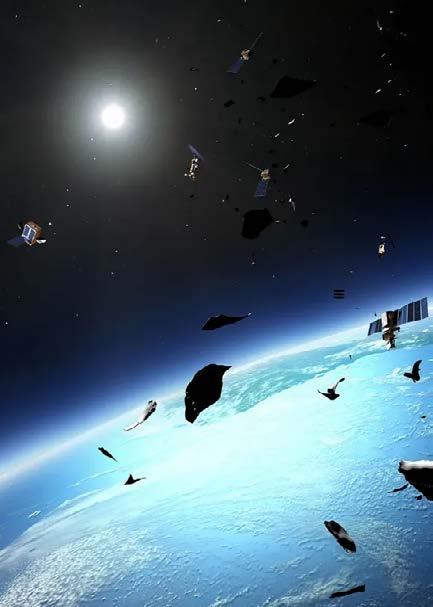
"The Universe is infinite But space has its limits
Rockets a launching
Sat’lites are orbiting
Explosions in Space
Oh what a waste
Fragments go flying
And we go crying “Space junk we’ve got” Man-made or not
Then comes Kessler who knows the better
When things collide
Their debris do multiply
Thanks to partnering
And NASA’s gathering
We look for ways
To manage the spray"
- S. Thuy Nguyen-Onstott
Mission Assurance Manager, Mars Sample Return
06 - Orbital Debris 08 - Who are they? 10 - How much waste is in space? 12 - Types of Space Junk 14 - Impacts of Space Junk 16 - Impacts of Space Junk: Examples 18 - Who is involved? 20 - Kessler Syndrome 24 - History of Space Debris findings: a timeline 28 - What is NASA doing about Space Junk? 30 - Re-entry into Earths Atmosphere 32 - Bringing in the trash
Table of contents
What is Orbital debris AKA space junk?

6
Orbital debris (duh BREE) is “junk” that is circling Earth. It is any human-made object in orbit around the Earth that no longer serves a useful function, Such debris includes nonfunctional spacecraft, abandoned launch vehicle stages, mission-related debris, and fragmentation debris. Humans have been launching objects into space for more than 50 years. Most of those objects have fallen back to Earth. A piece of debris falls back to Earth about once a day. These objects either land or burn up in the atmosphere. Most objects that return to Earth end up in water, since it makes up 70% of Earth’s surface. But many of the objects sent into space are still in orbit around Earth.
Even tiny paint flecks can damage spacecraft when traveling at these velocities. A number of space shuttle windows were replaced because of damage caused by material that was analyzed and shown to be paint flecks. In fact, millimetersized orbital debris represents the highest mission -ending risk to most robotic spacecraft operating in low Earth orbit.
Most of that debris sits within 1,250 miles of Earth’s surface in what is known as low Earth orbit, home to lots of satellites, such as NASA’s Earth Observing System fleet and the International Space Station. And while space is big—so even 23,000 fragments tend to be far from each other—even the tiniest bits of man-made flotsam can be problematic for active earth orbiters because of their breakneck speeds.

7
Science photo gallery
Who are they and what are they doing for space?
NASA + Department of Defence
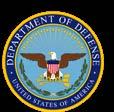
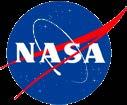
8
Who are they?
NASA and the DoD cooperate and share responsibilities for characterizing the satellite (including orbital debris) environment. DoD’s Space Surveillance Network tracks discrete objects as small as 2 inches (5 centimeters) in diameter in low-Earth orbit and about 1 yard (1 meter) in geosynchronous orbit.
NASA stands for National Aeronautics and Space Administration. NASA is a United States government agency that is responsible for science and technology related to air and space. The Space Age started in 1957 with the launch of the Soviet satellite Sputnik. NASA was created in 1958. The agency was created to oversee U.S. space exploration and aeronautics research.
The Department of Defense is America’s largest government agency. With our military tracing its roots back to pre-Revolutionary times, the department has grown and evolved with our nation. Our mission is to provide the military forces needed to deter war and ensure our nation’s security.
9
How much waste is in space?
There are approximately 23,000 pieces of debris larger than a softball orbiting the Earth. They travel at speeds up to 17,500 mph, fast enough for a relatively small piece of orbital debris to damage a satellite or a spacecraft. There are half a million pieces of debris the size of a marble or larger (up to 0.4 inches, or 1 centimeter) or larger, and approximately 100 million pieces of debris about .04 inches (or one millimeter) and larger. There is even more smaller micrometer-sized (0.000039 of an inch in diameter) debris
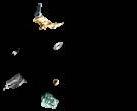

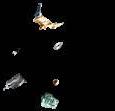


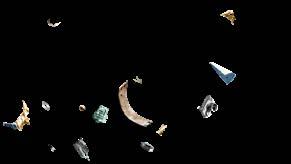
Millions of man-made debris and naturally occurring micrometeoroids (MMOD) orbit in and around Earth's space environment at hypervelocity speeds averaging 10 km/s (22,000 mph). This "space junk" collides with spacecraft and satellites potentially causing serious damage or catastrophic failure. These collisions can be a life threatening risk to astronauts conducting extra-vehicular activities in space. To minimize the severity of the damage caused by an impact, it is necessary to understand the current orbital debris environment


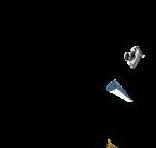
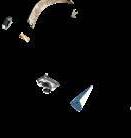
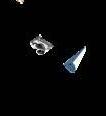

10
... it is the unseen population of MMOD that poses the biggest risk to spacecraft: the orbital debris large enough to cause
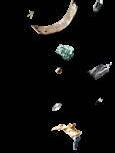
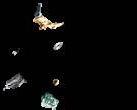
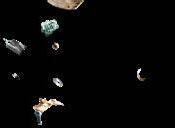

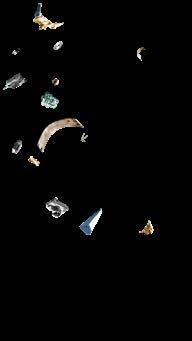
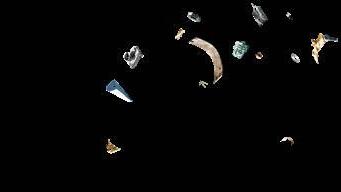

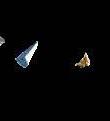

11
Bolts
Rockets
Types of Space Junk
or debris (duh-bree)
Nuts
Screwdrivers
12
Derelict spacecraft and upper stages of launch vehicles, carriers for multiple payloads, debris intentionally released during spacecraft separation from its launch vehicle or during mission operations, debris created as a result of spacecraft or upper stage explosions or collisions, solid rocket motor effluents, and tiny flecks of paint released by thermal stress or small particle impacts
Satellites
13
Impacts of space junk
Most space junk is located in what is known as low Earth orbit – the zone within approximately 2,011 km of the planet’s surface, and in which many satellites, such as the ISS and NASA’s Earth Observing Fleet System, The problem is not confined to the risk posed to space exploration. A proportion of the space junk in low Earth orbit will gradually lose altitude and burn up in Earth’s atmosphere
Spacecraft
on astronauts, spacecraft and the environment
14
Ozone Layer
Space Junk has a direct, negative impact on the environment seeing as objects left behind in space release various chemicals into the atmosphere and ultimately contribute to the depletion of the ozone layer. This includes debris from old fuel tanks containing highly toxic fuel residue, unsymmetrical dimethylhydrazine (UDMH), a carcinogen which is harmful to plants and animals.
Astronaut
15
Examples of Impact
Spacecraft
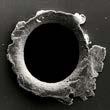
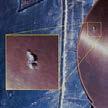
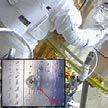 Space Shuttle window being inspected for orbital debris impacts
An impact that completely penetrated the antenna dish of the Hubble Space Telescope
View of an orbital debris hole made in the panel of the Solar Max experiment
Space Shuttle window being inspected for orbital debris impacts
An impact that completely penetrated the antenna dish of the Hubble Space Telescope
View of an orbital debris hole made in the panel of the Solar Max experiment
16
After in-space repairs to the Hubble Space Telescope, the returned parts show many orbital debris impacts

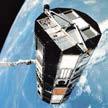
Long Duration Exposure Facility (LDEF) was left in low Earth orbit for 5.7 years before being retrieved by space shuttle Columbia in January 1990
Orbital Debris
Radar Calibration Spheres (ODERACS) experiment deployed spheres and dipoles from the Shuttle to calibrate the Haystack orbital debris radar measurements
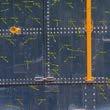
Examples of Impact
Spacecraft
17
Who is involved?
Top Contributing Countries
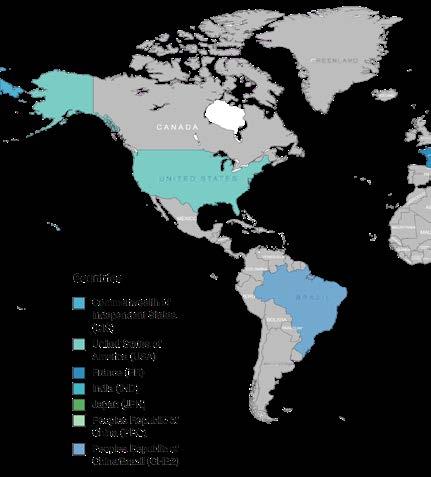
18 In orbit + Decayed Debis count
9,499* 1,055* 87*
Who are the top contributors?
*pieces of debris
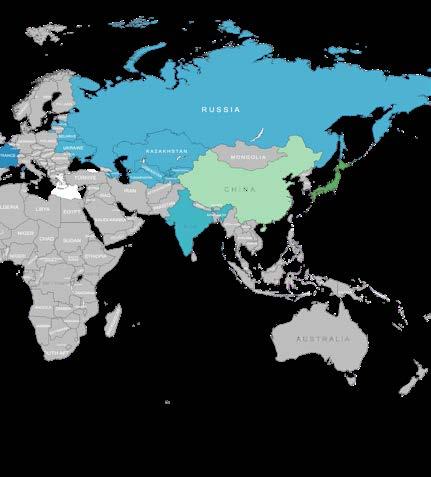
19
17,078*
528* 391*
6,727*
Kessler Syndrome

Spent rockets, satellites and other space trash have accumulated in orbit increasing the likelihood of collision with other debris. Unfortunately, collisions create more debris creating a runaway chain reaction of collisions and more debris known as the Kessler Syndrome after the man who first proposed the issue, Donald Kessler. It is also known as collisional cascading
This cascade of collisions first came to NASAs attention in the 1970s when derelict Delta rockets left in orbit began to explode creating shrapnel clouds. Kessler demonstrated that once the amount of debris in a particular orbit reaches critical mass, collision cascading begins even if no more objects are launched into the orbit. Once collisional cascading begins, the risk to satellites and spacecraft increases until the orbit is no longer usable
Kessler proposed it would take 30 to 40 years for such a threshold to be reached and today, some experts thing we are already at critical mass in low-Earth orbit at about 560 to 620 miles (900 to 1,000 kilometers)
20

21

“The only way to do it is to bring back the larger objects ... If you want to stop this collisional cascading process, you have to bring back satellites, and we don’t know how to do that.”
- Donald Kessler
22
Retired astrophysicist and former NASA scientist

23
History of space debris re-entry


A Timeline 1978 1979 Cosmos 954 Skylab 24



1979 1991 2001
Space Station Mir Salyut 7 Pegasus 2 25
Russia's



2003
2013
Shuttle Columbia Europe's GOCE Satellite
Research
26
2011
Space
Upper Atmosphere
Satellite (UARS)



A Timeline 2019 2018 2016
Long March 7 Rocket
China's Tiangong 1 Space Lab
27
China's Tiangong 2 Space Lab
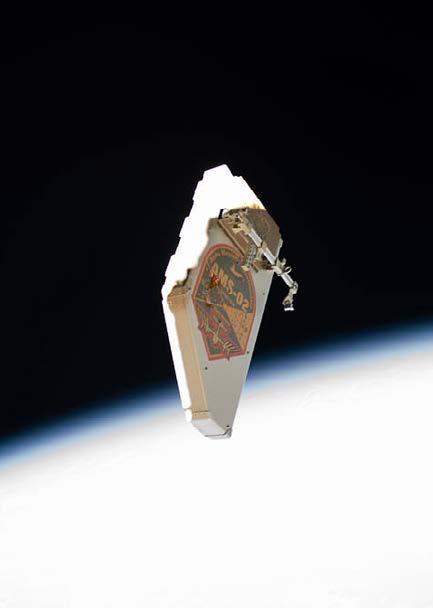
28
NASA Photo gallery
What is NASA doing about space junk?
As humans launch more and more objects, will Earth orbit turn into a dangerous, crowded junkyard? Space agencies around the world are working to make sure that does not happen. Since 1988, the United States has had an official policy to keep the creation of new orbital debris to a minimum. NASA even has an Orbital Debris Program Office at Johnson Space Center in Houston, Texas. This office looks for ways to create less orbital debris. It also looks for ways to get rid of debris that is already in space. Many U.S. aerospace companies also follow guidelines to reduce the creation of debris.
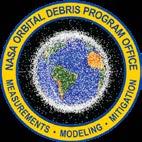 Photo by NASA
Photo by NASA
29
Re-entry into Earths Atmosphere
Spacecraft reentry is tricky business for several reasons. When an object enters the Earth's atmosphere, it experiences a few forces, including gravity and drag. Gravity will naturally pull an object back to Earth. But gravity alone would cause the object to fall dangerously fast. Luckily, Earth's atmosphere contains particles of air. As the object falls, it hits and rubs against these particles, creating friction. This friction causes the object to experience drag, or air resistance, which slows down the object to a safer entry speed.
30
31 31
Its time to bring in the trash.
Junk satellites can pose risks to other objects in Earth’s orbit. Startups are testing out ways to tidy up, from magnets to robotic tentacles
The ClearSpace-1, a 500-kilogram spacecraft equipped with four robotic tentacles, is locked in to launch in 2025. Funded by ESA and backed by enterprises in several European countries including Switzerland, the Czech Republic, Germany, Sweden, Poland, the United Kingdom, Portugal, and Romania, ClearSpace’s project was the winning idea after ESA issued a callout in 2019 for experts to pitch a space debris removal solution
For its first mission, the ClearSpace-1 will aim to capture the upper part of an ESA-owned craft known as VESPA (Vega Secondary Payload Adapter), a 112-kilogram object about the size of a small satellite that was launched in 2013 and eventually left in “gradual disposal” orbit at an altitude of about 800 kilometres by 660 kilometres
32

33

PHOTOGRAPH BY GETTY IMAGES

The space around our planet is filled with rubbish. It’s time to bring in the trash.





























 Space Shuttle window being inspected for orbital debris impacts
An impact that completely penetrated the antenna dish of the Hubble Space Telescope
View of an orbital debris hole made in the panel of the Solar Max experiment
Space Shuttle window being inspected for orbital debris impacts
An impact that completely penetrated the antenna dish of the Hubble Space Telescope
View of an orbital debris hole made in the panel of the Solar Max experiment




















 Photo by NASA
Photo by NASA



